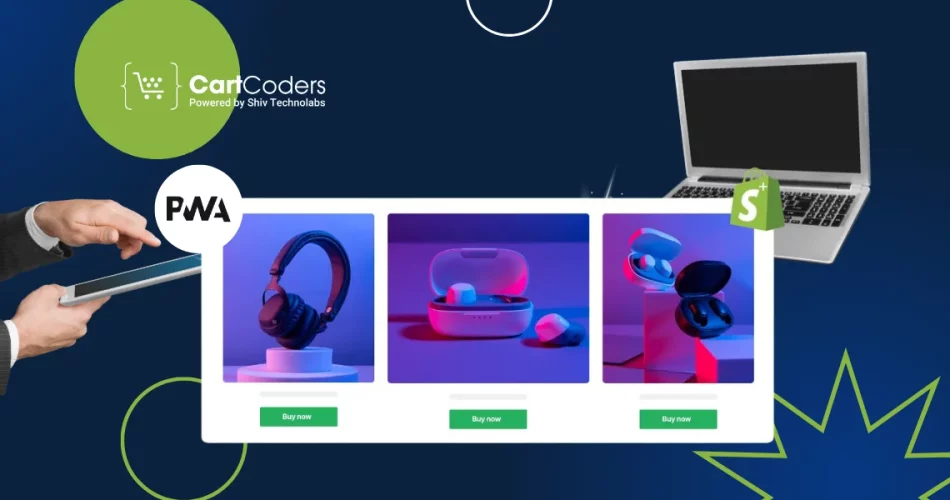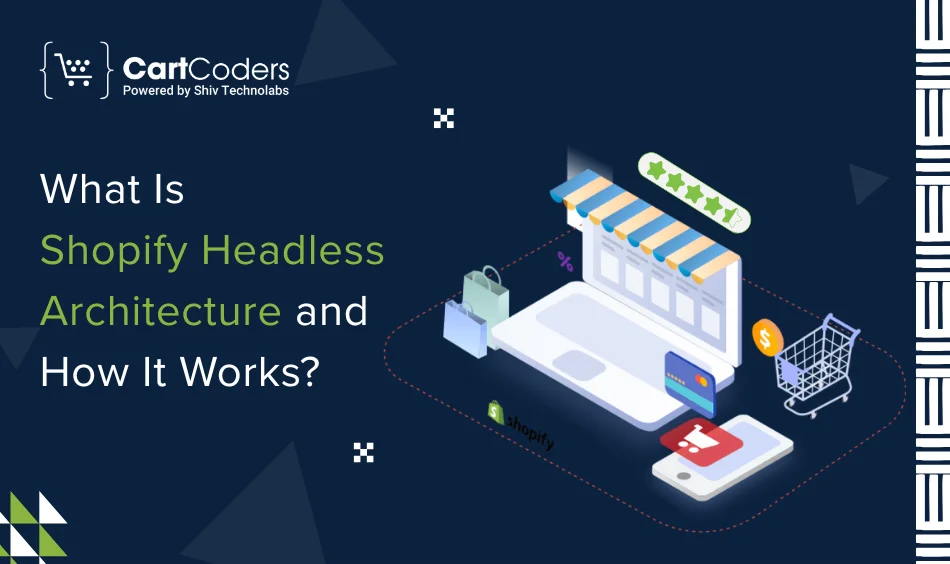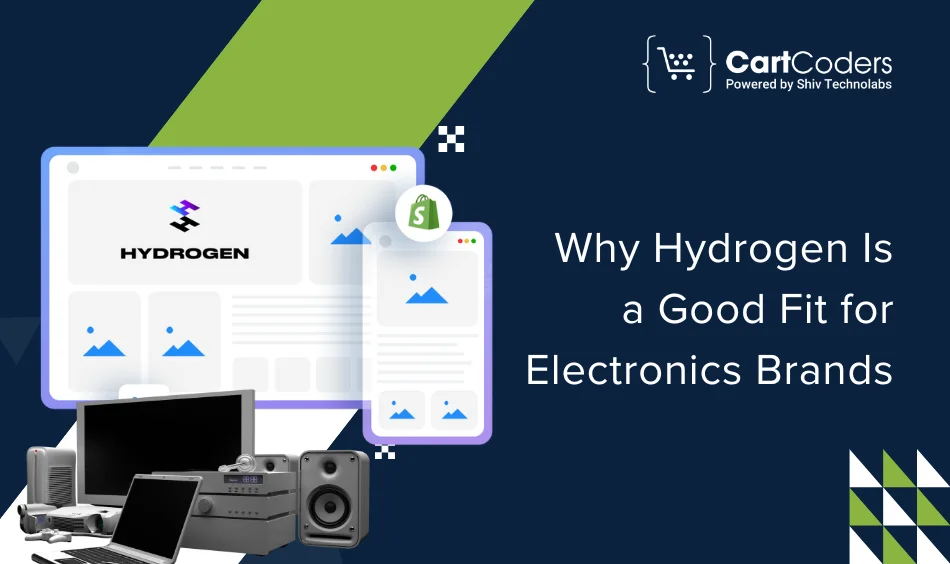Custom Engagement Solutions
Unlock tailored solutions with a free, no-obligation strategy session.
Expert Developers & Engineers on Demand
Scale Your Team with Skilled IT Professionals
Expert Guidance for Digital Transformation

Standard Shopify stores struggle when electronics brands grow big. You get stuck with slow pages, limited designs, and poor mobile experiences. Regular Shopify themes can’t handle complex product catalogues or heavy traffic during product launches.
Over 70% of online shopping traffic now comes from mobile devices, yet mobile conversion rates still lag behind desktop, averaging around 1.8% on mobile vs. 3.9% on desktop, nearly a 50% gap in performance (Data Source: Replo).
The main reason? Most online stores still look and feel like desktop sites forced onto small screens—something that Shopify Plus development can help fix with responsive, mobile-first designs.
Headless commerce Shopify Plus solves this problem. It separates your store’s frontend from Shopify’s backend systems. This gives you faster loading times, custom designs, PWA features, and full control over user experience.
Electronics brands targeting mobile users need headless Shopify Plus to stay competitive.

With headless commerce, you divide the presentation layer of your shop and management layer of your shop.
Shopify Plus takes care of the products, orders, and inventory, and you construct a custom frontend with the help of modern web frameworks such as Hydrogen or Next.js.
The process works like this:
Important concepts to understand:
This setup removes theme restrictions. You create your own frontend experience with complete design control.
Progressive Web Apps (PWA) are websites that work like native mobile apps. They load fast, install on devices, and function without internet connections.
Headless electronics store Shopify with high traffic and diverse device usage benefit from PWAs through:
Shopify Plus adds more advantages:
Shopify Plus Progressive Web App delivers an enjoyable, easier, and more modern shopping experience.

Electronics stores deal with highly specific demands such as product versions, technical specifications, filters, and adaptive prices. Shopify’s Hydrogen framework addresses these needs perfectly.
Hydrogen is Shopify’s official React framework that supports:
Electronics brands gain these benefits:
Take an example of a smart phone that comes in 4 different colors, 3 storage capacities, and 2 RAM capacity. Hydrogen manages these combinations smoothly without breaking layouts or slowing performance.
Standard Shopify themes struggle with complex specification tables or product comparisons. Hydrogen lets you create custom components for technical details like processor specifications or graphics benchmarks.
Hydrogen and Storefront API enable instant product filtering by categories, features, or prices without page reloads.
For performance and complexity requirements, Hydrogen becomes necessary rather than optional.
Here’s the technical structure of a headless Shopify Plus electronics store.
Inventory, orders, discounts, and products are kept to Shopify. Rather than operating with Liquid templates offered by Shopify, you can go through:
Your store’s display layer uses React-based frameworks like:
These frameworks manage routing, dynamic rendering, and user experience.
For maximum speed:
Essential tools:
This architecture delivers millisecond loading times even during traffic spikes.
The advantages of going headless are clear and measurable.
Headless architecture plus PWA equals lightning speed. Your store meets Google’s Core Web Vitals requirements, reducing bounce rates and boosting conversions.
Want sticky specification sidebars? Interactive 3D product views? Custom filtering systems? Everything becomes possible without theme limitations.
Display real-time device information, firmware updates, or compatibility charts through API connections.
50,000+ visitors during product launches without performance issues. Headless setups scale across global infrastructure seamlessly.
Create region-specific storefronts with different currencies, languages, and product variations using the same backend.
Use this checklist to determine if headless is right for your business.
Standard Shopify themes cannot handle this complexity effectively.
Whether bundling warranties or connecting with backend systems, you need API-level flexibility.
If mobile performance drives your business, headless PWA is essential.
Global market targeting requires custom localization solutions.
Headless setups connect all systems without frontend limitations.
These brands demonstrate successful Shopify headless electronic store implementations.
Tesla’s store uses headless, React-based architecture (though not Shopify). Key features include:
If Tesla used Shopify, they would likely choose the Hydrogen approach.
This smart mug company uses Shopify Plus backend with custom PWA frontend. Features include:
Performance metrics (Lighthouse scores):
Tech stack: Storefront API, Next.js, custom CDN.
We create high-performance Shopify Plus headless stores specifically for electronics and tech companies.
CartCoders provides:
Electronics brands require more than attractive themes—they need speed, control, and scalability. Shopify Plus, Hydrogen, and PWA fulfil these needs by going headless.
You get performance that converts visitors, the flexibility of design that expresses your brand and technology that scales with your business.
It does not matter whether it is your first electronics product or you have the vast catalogs in various regions, CartCoders will provide you with the best Shopify plus store development services.
Get on track into the future of headless now step up beyond themes and create a Shopify Hydrogen PWA electronics store that is worthwhile.
It separates your eCommerce frontend and Shopify backend. With APIs, you develop personal frontends, rather than using Shopify themes, allowing you greater freedom and quicker page load speeds.
Yes. Hydrogen works well for electronics brands managing complex product specifications, filters, and variants. It’s fast, flexible, and built on React.
Yes. With Hydrogen or Next.js, you can develop Progressive Web Apps that are compatible with Shopify Plus, giving a mobile app-like experience and offline support.
You will require a developer with experience of Storefront API and such frameworks as Hydrogen. They integrate frontend and backend to develop a quick, custom-made shopfront.
Projects delivered in 15+ industries.
95% retention rate, building lasting partnerships.
Serving clients across 25+ countries.
60+ pros | 10+ years of experience.